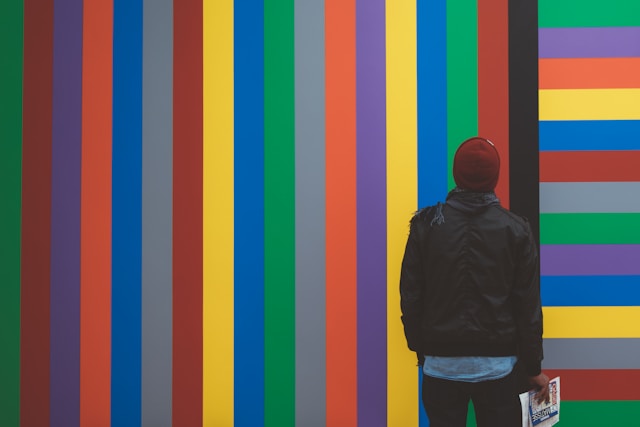The Untold Secrets of Web Design: What Every Business Should Know
In today’s digital age, your website is often the first impression a potential customer will have of your business. A well-designed website can build trust, attract visitors, and increase conversions. However, many people are unaware of the deeper principles behind successful web design, and there are some “untold secrets” that can make a significant difference. These are not just about making a website look pretty, but ensuring it functions seamlessly and delivers on its promise.
Let’s uncover these hidden aspects of web design that many people do not talk about.
1. The Psychology of Color and Visual Design
One of the most powerful tools in web design is color. The colors you choose for your website influence the emotions of visitors and can affect their decision-making process. For example, blue evokes trust and professionalism, while red can stimulate excitement and urgency.
Incorporating the right color scheme can boost engagement, as it helps convey your brand's personality. But here’s the untold secret: the effectiveness of colors is often subtle. It is not just about choosing the “right” colors. it is about how you combine them, how much white space you allow, and how you create contrast to guide the user’s attention.

2. Mobile-First Design: The New Normal
With the increasing reliance on smartphones, mobile-first design has become crucial. What many people do not realize is that mobile-first design is not just about scaling down a desktop website to fit smaller screens. It requires a complete rethinking of how content is organized and delivered.
Websites that prioritize mobile users are not only more accessible, but they also perform better in search rankings. Google’s mobile-first indexing means that the mobile version of your site is considered the primary version. So, designing for mobile users first ensures that you are optimizing your site for both the user experience and SEO.
3. User Experience (UX) Is More Than Navigation
User experience (UX) is often thought of as simply how easy it is to navigate a website. However, UX is about the entire journey of a visitor. It involves the structure, content flow, accessibility, load times, and even the choice of images.
An often-overlooked secret of great UX is anticipating user needs. For example, understanding what a visitor is likely to do next and guiding them subtly toward that next step (whether it is filling out a form or checking out a product). This type of intuitive design keeps users engaged and increases the likelihood of conversion.
4. The Power of Minimalism
Minimalist design is not just a trend. it is a timeless principle that’s grounded in cognitive psychology. Humans are naturally drawn to simplicity. Cluttered websites overwhelm users and can lead to high bounce rates.
But the untold secret of minimalist design is knowing where to draw the line between simplicity and functionality. A minimalist website does not mean stripping away important features. Instead, it means focusing on the essential elements that serve a clear purpose and enhance the user experience without distractions.
5. The Hidden Power of Micro-Interactions
Micro-interactions are small design elements that provide feedback to the user. Whether it is a hover effect on a button or a subtle animation when a form is submitted, these interactions engage users and make the website feel more responsive.
While they might seem insignificant at first glance, micro-interactions add depth to the user experience and make it feel more intuitive. The key is to use these elements sparingly and purposefully, as overuse can lead to a cluttered and distracting interface.

6. Speed Is King: Optimizing Load Time
In web design, speed is one of the most critical factors for success. A slow-loading website can drive users away before they even see your content. In fact, studies have shown that 53% of mobile users abandon a website if it takes longer than 3 seconds to load.
But the untold secret behind load time is that it is not just about reducing file sizes. Optimizing for speed involves a comprehensive strategy, including image compression, browser caching, and server-side optimizations. It also means delivering your content in a way that prioritizes the user’s immediate needs, ensuring that essential elements load first.
7. Accessibility: Designing for Everyone
Accessibility is one of the most overlooked aspects of web design. Websites should be designed to be usable by people with disabilities, including those who rely on screen readers or other assistive technologies.
The untold secret here is that accessibility does not have to complicate your design. Simple adjustments, like using proper heading structure, alt text for images, and ensuring color contrast, can make a huge difference. Plus, designing for accessibility often leads to a better overall user experience, making your site more inclusive and easier to navigate for everyone.
8. SEO and Content Structure
While many people think of SEO as an afterthought, it is vital to design your website with search engines in mind from the start. Google uses a wide range of signals to rank websites, including user behavior, content structure, and page load speed.
The untold secret here is that your website’s design directly impacts your SEO. A well-organized, easy-to-navigate website encourages visitors to stay longer, which sends positive signals to search engines. Additionally, structuring your content with clear headings, keywords, and internal linking not only enhances user experience but also helps your site rank better.
9. A/B Testing and Continuous Improvement
Even the best-designed websites can be improved. The untold secret is that web design should be a continuous process. A/B testing allows you to experiment with different design elements, layouts, and content to see what resonates most with your audience.
By testing small changes—like altering a button color or adjusting the wording of a call-to-action—you can optimize your website over time, driving better results and improving user satisfaction.
10. Emotional Design: Connecting with Your Audience
Emotional design is about crafting a website that resonates with users on a deeper level. By focusing on how your website makes people feel, you can create an emotional connection that drives engagement and loyalty.
The untold secret of emotional design is understanding your audience’s needs and desires, and then shaping your website to meet those needs. Whether it is a sense of trust, excitement, or calm, emotional design can influence how people perceive your brand and their likelihood of returning to your site.
Conclusion
Web design is far more than just aesthetics. It is about creating an experience that engages users, meets their needs, and helps them achieve their goals. The untold secrets of web design lie in understanding the subtle principles of psychology, usability, and accessibility that go into creating a website that works. Whether it is color psychology, mobile-first design, or speed optimization, each element plays a crucial role in shaping your website's success.
By focusing on these hidden aspects of web design, you can create a website that not only looks great but also provides real value to your users. Ultimately, it can lead to increased traffic, higher conversions, and greater overall success for your business.